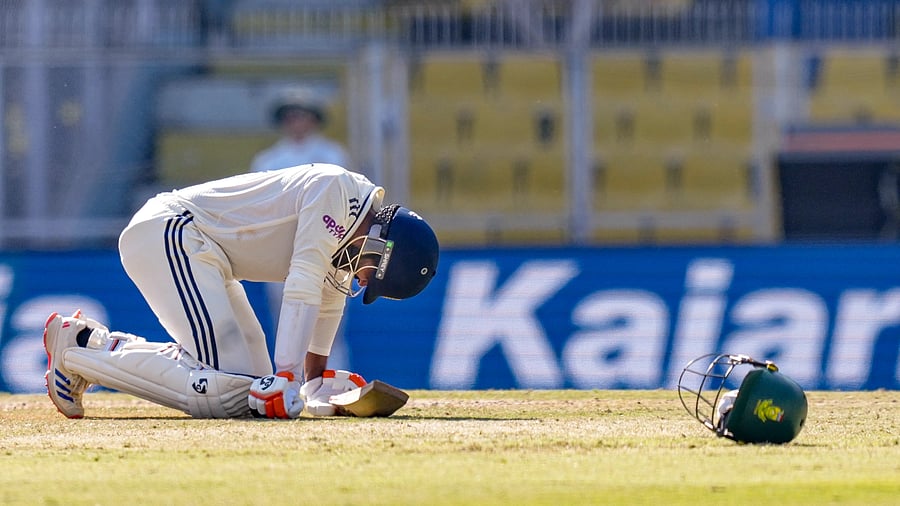
After another Test series humbling at home, the BCCI really needs to introspect on what is going wrong and get things back in order.
Credit: PTI photo
Let's not be economical with the truth: Indian Test cricket is in a major crisis. After suffering a clean sweep (3-0) against New Zealand last year, the Indian team met the same fate against South Africa following their 408-run loss in the second Test here at the ACA Stadium on Wednesday. Three of those five defeats at home across two series have come on rank turners, one on a seaming wicket in Bengaluru and the latest on a surface which one of their bowlers termed the "road" and another a "good wicket" to bat.
What used to be a rare occurrence of struggle on crumbling tracks has become far too common. Much as the team may stress on the depth and quality in the change room, the results tell a different story. It's not an overnight development though. Signs have been there -- be it Pune 2017 (vs Australia) or Indore 2023 (vs Australia) - but those issues were left unaddressed as aberrations.
Head Coach Gautam Gambhir identified renewed focus on Test cricket as an immediate necessity to arrest the declining standards. The question is how do you achieve that goal?
For long both the authorities have been underlining the primacy of Test cricket, but no tangible step has been taken to support that claim. Merely scheduling more matches doesn't serve the purpose, you need to have an ecosystem that prepares players for the mental and technical challenges that Test cricket demands.
India has one of the robust first-class cricket structures and several world-class players have emerged from this system. But can we say the current system is still producing the same calibre of players? From the types of pitches to the lack of availability of big-ticket players, not necessarily superstars, has been an issue. The Board of Control for Cricket in India recently passed a diktat directing the internationals to play in domestic cricket, but how effectively has it been implemented?
Besides the tactical confusion over the kinds of pitches -- from wanting to prepare seaming surfaces to preparing batters to counter SENA pitches to returning to their traditional strength of spin tracks -- the standard of spinners in domestic cricket has negatively impacted batters' ability against quality spin. The white-ball mindset of both the captains and the bowlers are to be blamed for this. Spinners are mostly used as a defensive option in order to contain runs which requires them to bowl flat and fast to restrict scoring.
This practice affects the skills of both sets of players. While spinners lose wicket-taking skills, batters lose the ability to survive quality turn. The two Tests against South Africa exposed this reality in detail.
Another major concern has been the international calendar that is drawn with little application of mind. Indian cricketers have little turnaround time between multiple series and many of them find little time to work on their technical shortcomings.
"Obviously, scheduling does make a difference," Gambhir answered. "Imagine, three days before the start of the first Test match (vs South Africa in Kolkata) we were in Australia. And suddenly you come back from there and you have to join a Test team and you have got two days to plan with the Test side. But that again is not an excuse. Sometimes we can probably prioritise this better. We can have more gaps in the middle so that we can probably start working on certain skill sets. Because working for two days on a certain skill set (isn't ideal). We always knew that they had quality spinners, they had two really, really experienced spinners... So that would have always been a challenge for a Test side," he offered.
India embark on white-ball cricket, starting with three ODIs against South Africa from November 30, and their next Test series is scheduled only in August next year in Sri Lanka and later in the year in New Zealand. But the defeat to South Africa should serve as a wake-up call and prompt the powers that be to take up measures that help India regain its status as a powerhouse in Test cricket.